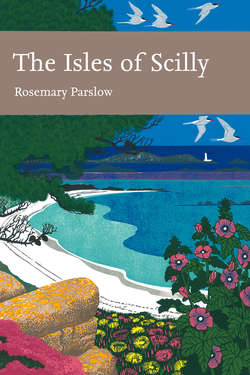Читать книгу The Isles of Scilly - Rosemary Parslow - Страница 29
Pollen analysis
ОглавлениеPollen analysis of samples from Higher and Lower Moors (Scaife, 1984) shows the distribution of pollen and spores in four levels of the peat below the two mires on St Mary’s. Later work investigated more areas of peat (strictly not really peat but humic silts) at Porth Mellon, St Mary’s, and Par Beach, St Martin’s (Ratcliffe & Straker, 1996). The earliest levels are mostly tree and shrub pollens, oak, birch, hazel, some ash, elm and willow Salix sp., also some grass species, sedges, bracken Pteridium aquilinum, other ferns and some aquatic plants. These all point to a landscape with woodland, mire and open-water habitats. The record for Lower Moors has less tree pollen and may fit the theory that the ancient woodland was distributed mainly on the north and east of the island (Thomas, 1985). Pollen samples also show there was some further clearance of the secondary woodland that regenerated after the earlier clearances. This coincided with the more open landscape and evidence of arable, heathland, mire and coastal habitats associated with the Iron Age and Romano-British communities then inhabiting the islands. John Evans (1984), excavating an Iron Age field system at Bar Point, found the kind of plant remains that would be expected to follow after most of the woodland had been cleared. These charred fragments were mostly plants of heathland or acid grassland: grasses, ribwort plantain Plantago lanceolata, vetch Vicia sp., Galium, Medicago, broom Cytisus scoparius, elder Sambucus nigra, gorse Ulex sp., false oatgrass Arrhenatherum elatius, as well as oak.
